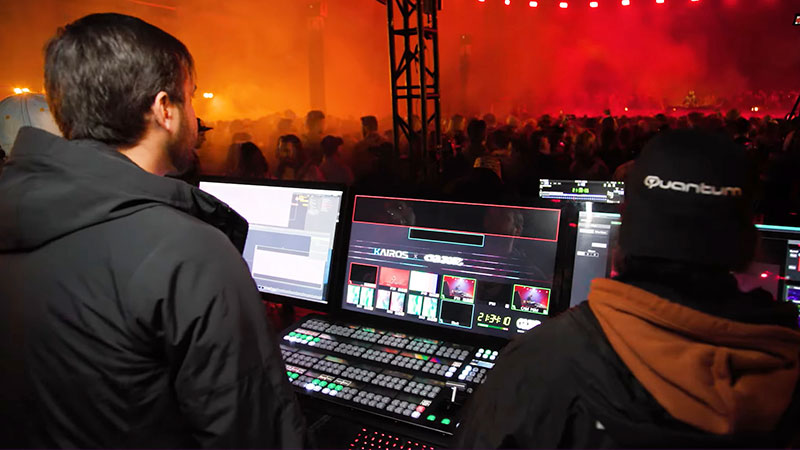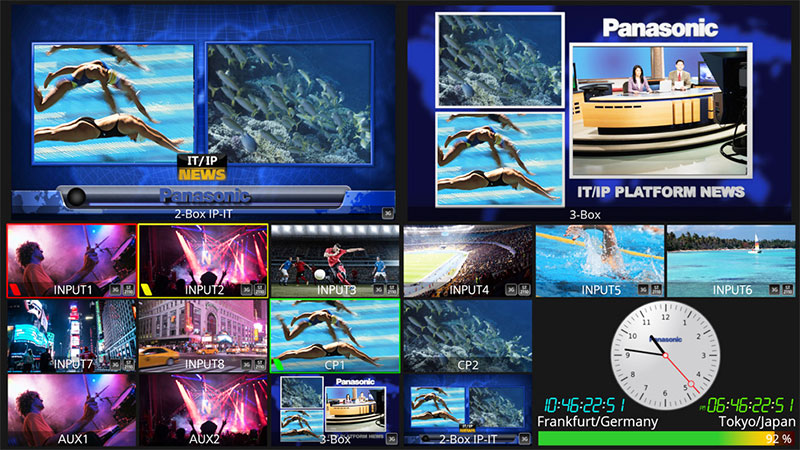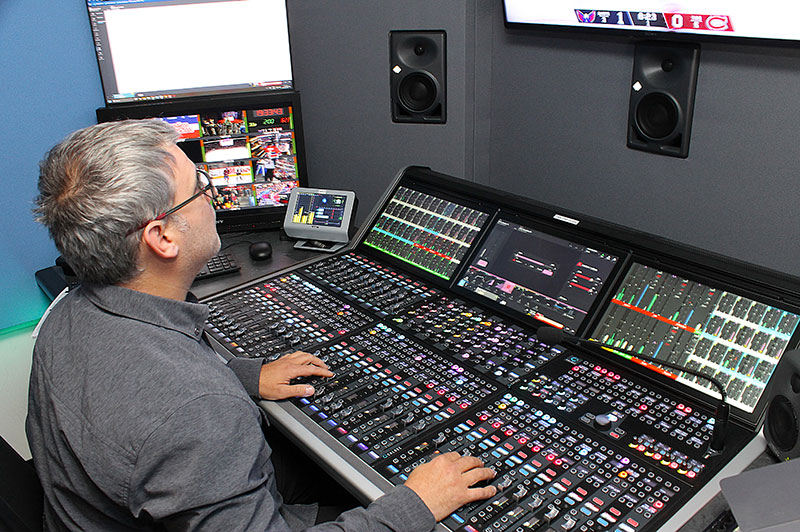Digital Media World attended SMPTE’S METexpo 2024 in Sydney in March, finding a full exhibition with a friendly atmosphere and about 35 major broadcast exhibitors.

Digital Media World attended SMPTE’s METexpo 2024 in Sydney, Australia, held 5 - 7 March at Royal Randwick Racecourse, finding a full exhibition with a friendly atmosphere and about 35 major broadcast exhibitors.
We especially wanted to take advantage of the first opportunity in Australia for a demo of Panasonic’s live video production platform KAIROS, available on the Magna Systems stand. A software-defined system, KAIROS’ I/O capabilities are widely configurable between baseband signals and IP packets, resolution and format, on inputs and outputs simultaneously. RTMP, SRT and NDI are all supported.
KAIROS input/output functions also have an Agile Input Routing feature that allocates and increases the system’s GPU I/O capability according to the bandwidth of video sources. It makes more efficient use of an ST 2110 network and streaming inputs such as SDI, NDI and SRT to allow the higher density.

On top of the KAIROS hardware Core, the software-defined aspect of KAIROS was interesting to see, with large differences to a hardware-based switcher. KAIROS is not restricted by the number of MEs or keys. Effects layers can be added depending on the GPU capacity, in a similar way to the layers used in image editing software. This approach allows users to set the keys and the scaling per layer, as required, and means the size of the whole system can be controlled. For instance, the system we saw at the show was not huge.
The KAIROS Core 2000 main frame in particular has increased the number of layers by increasing the GPU video processing capacity, allowing more complex, sophisticated video looks. This model of the hardware also has four customisable multiviewer outputs.
Other software features are the Canvas function used to produce videos in custom aspect ratios, such as very long wall displays, as well as the standard 16:9 format. The KAIROS processing latency can be as low as one frame to preserve sports and concert performances. It’s also possible to vary the frame delay for each channel, and between the sources.

Compliance and Playout
Another demo came at the Pebble stand where we saw Pebble Playout and Pebble Automation in use. Pebble were among the first to develop channel-in-a-box software, but the company has continued to add functionality, integrations, virtualisation and greater resilience over time, as well as the automation systems. The staff on the stand also told us to look out for a new product that Pebble will be announcing at NAB this year…
Actus Digital gave us a look at the company’s compliance logging and technical QA monitoring suite of software on their stand. These applications can be adapted for on-premises, cloud or virtual machine configurations, or hybrid set-ups. The software is compatible with inputs ranging from SDI, Transport Stream/IP, 2110 and ATSC 3.0 to SRT, ZIXI, HLS, MPEG-DASH and others. It supports both linear over-the-air and OTT broadcasts, with instant notifications of audio/video quality discrepancies.
Engineering features include SCTE 35/104, loudness, TS analysis and discrepancy reporting between schedules and as-run logs, backed up by QoE/QoS alerts. At METexpo, we had demonstrations of in-depth OTT stream monitoring, which integrates compliance logging, and Remote Video Monitoring (RVM) to help providers follow regional ad insertions and channels across locations.
We saw Actus’ browser-based multiviewer that has an updated penalty box and monitoring-by-exception tools, and their clip editing tools, which can be used for direct export to social media, OTT, VOD and Catch-Up TV platforms. Some of these exports can be automated. Now, Actus is introducing AI-based workflows that use AI for very thorough audio and video analysis, from ad detection to transcription, translation, summarisation and face recognition – again, with a level of automation.

Panel Discussion – Workflows in the Cloud
We also attended a panel discussion at METexpo titled ‘Unleashing the Power of Cloud: Transforming Broadcast Production Workflows’.
The participants were diverse and brought expertise from across the industry. They included Alex Leung, Akamai’s Senior Enterprise Architect who has most recently been helping broadcasters adapt to OTT delivery, and Chief Product Officer Adam Marshall from Grass Valley, responsible for overall marketing. Malte Franken is Team Lead of Application Solutions Architecture at the ABC, and Elliot Renton has worked as a senior media, sports and technology executive for 25 years and is now at AWS Media, Entertainment, Games and Sports sector.
Hybrid cloud systems are becoming, and are set to remain, the norm for building broadcast workflows for some time. Some systems are still best kept on-premises – for security, convenience, cost or simply because the infrastructure exists to store data or operate workflows where they are. However, as cloud services continue to improve, become more secure and create affordable opportunities, organisations will find a range of new ways and motivations to make the cloud environment work for them.
Right now, the focus is on using cloud to join resources – talent, skills and teams, as well as access to tools and compute power. Scalability is also a primary factor in decisions to adopt cloud capacity. Just as it does on premises, automating workflows in the cloud as far as possible helps control costs.
The panelists also talked about changes in organisations’ need to move media – or not – that cloud systems have brought. Latency is a twofold issue here – end-to-end across a whole workflow, and operational, where it affects interactivity. All of panellists agreed that it will be interesting to watch how each company chooses to take advantage of cloud features as they evolve over the near future. metexpo.com.au




















